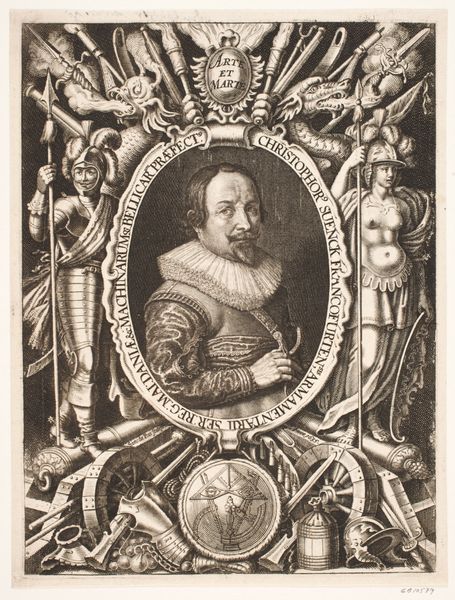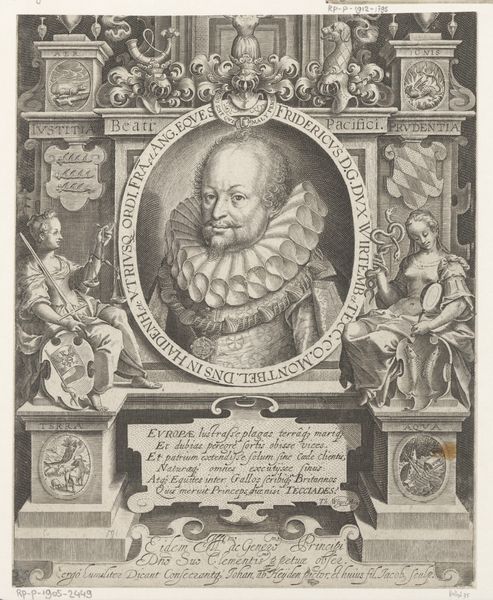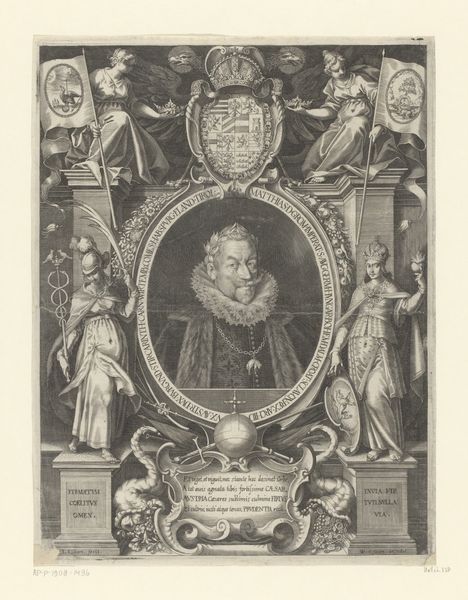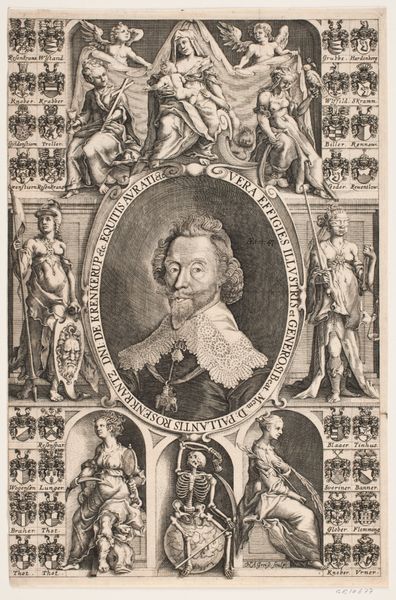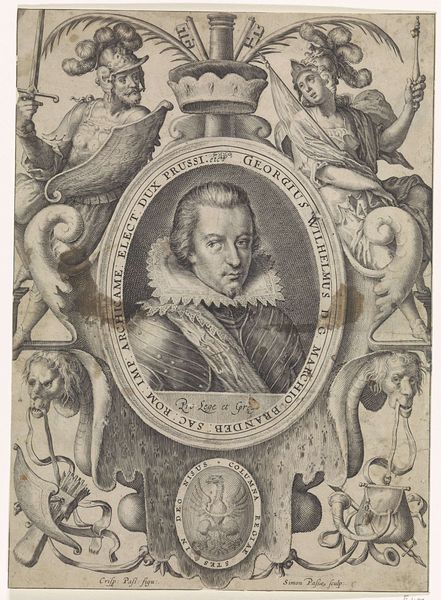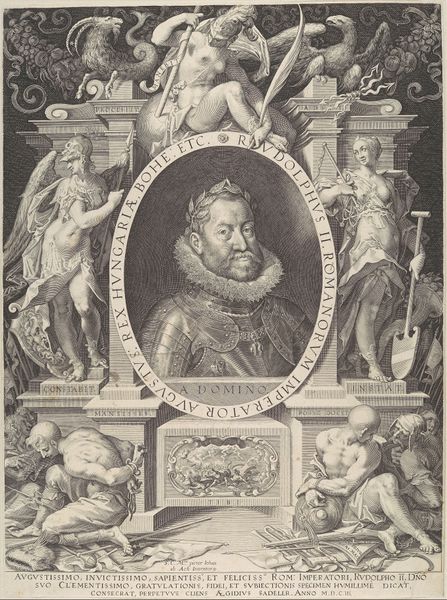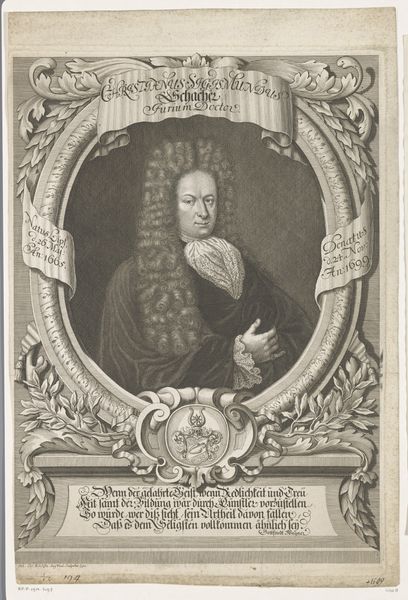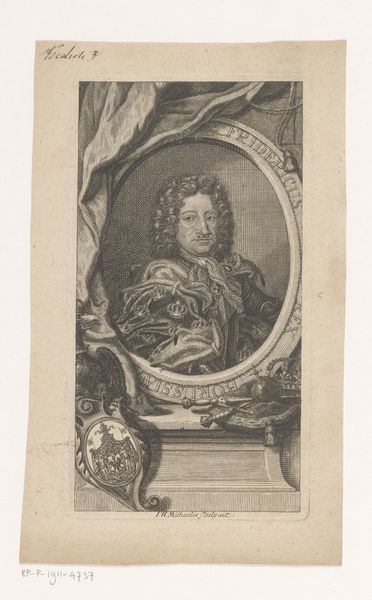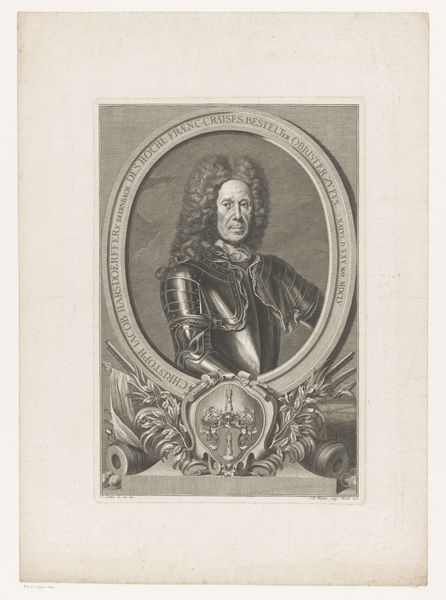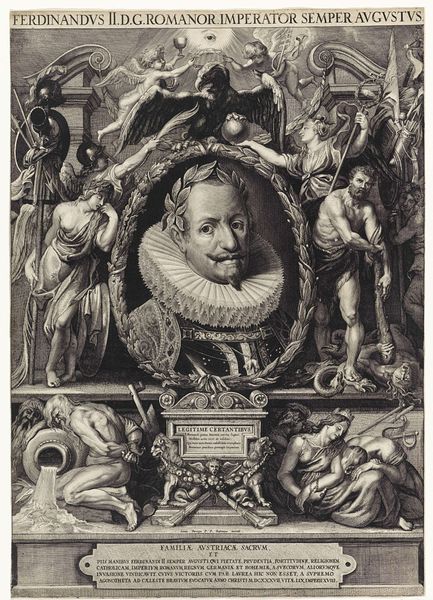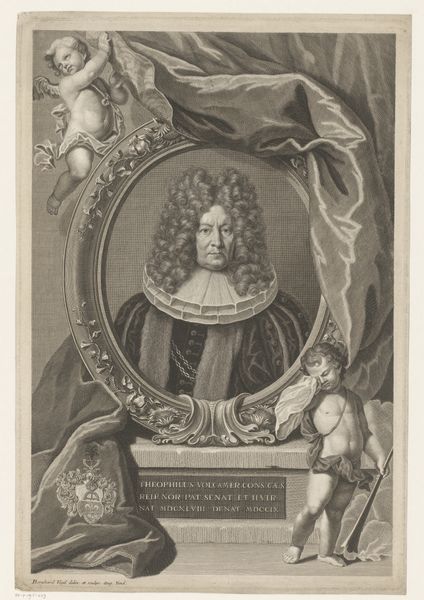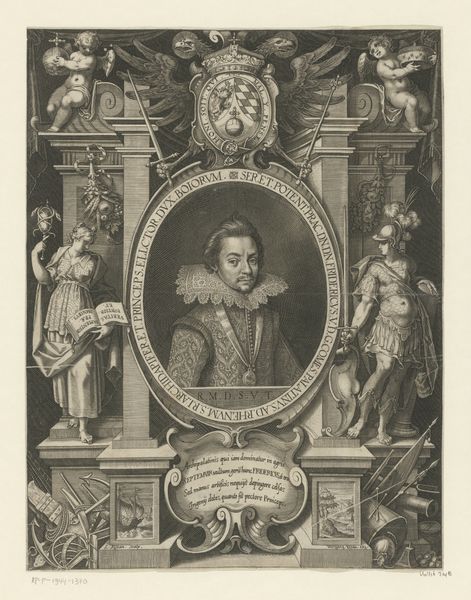
Portret van Johann Friedrich von Württemberg in decoratieve omlijsting met de personificaties Rechtvaardigheid (Justitia) en Kuisheid (Castitas) 1592 - 1628
0:00
0:00
print, engraving
#
portrait
#
pen drawing
# print
#
old engraving style
#
mannerism
#
pen work
#
history-painting
#
engraving
Dimensions: height 280 mm, width 204 mm
Copyright: Rijks Museum: Open Domain
Editor: So, here we have "Portret van Johann Friedrich von Württemberg in decoratieve omlijsting met de personificaties Rechtvaardigheid (Justitia) en Kuisheid (Castitas)" – a print, made sometime between 1592 and 1628 by Jacob van der Heyden. The engraving has so much going on! What initially strikes me is the almost overwhelming use of allegorical figures and text framing a relatively simple portrait. What do you make of it? Curator: It's fascinating, isn't it? Considering the historical context is key. This wasn’t just about depicting Johann Friedrich; it was about constructing a public image, reinforcing his authority, perhaps even legitimizing his rule through symbolism. These images played a key role in establishing noble family’s standing. Editor: So, the personifications of Justice and Chastity, alongside the heraldry, are about broadcasting a message? Who exactly was this message meant to reach? Curator: Precisely. Think about the role of prints at this time. They circulated amongst the elite – other nobles, diplomats, intellectuals. This print could be displayed, exchanged, even sent as a gift. The imagery of Justice and Chastity would suggest that Johann Friedrich governs fairly and lives virtuously – qualities befitting a ruler. Also the location and access to materials shaped access and production. Who benefits from his representation? Editor: That makes sense. It's almost like an early form of political PR. So much more intentional than just showing what he looks like. Were there certain artistic traditions that enabled these artistic decisions? Curator: Mannerism certainly played a role, allowing for elaborate ornamentation and symbolism to enhance the prestige of the portrait, not simply the accurate likeness. Looking closely we should examine which workshop this came from. The success depended on skilled engravers. And don’t forget the inscriptions - another layer of meaning accessible to a learned audience. Editor: It’s really interesting to think about the multiple layers of communication packed into one image. It seems a lot more involved and intentional when put into the context of court and political power at that time. Curator: Exactly, considering these artworks are never 'just' artworks is so important, especially in works created by artists working for commissions such as this. Now, what else jumps out to you about how van der Heyden shaped his image of power?
Comments
No comments
Be the first to comment and join the conversation on the ultimate creative platform.
